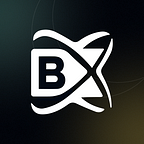Wrapped Token Development — Basic Detail Guide
Wrapped token development is a process of creating a digital asset that represent the cryptocurrency from one to another Blockchain Platforms.
What Are Wrapped Tokens?
A wrapped token is a virtual asset that represents the price of an underlying asset or cryptocurrency. The real asset is stored in a digital vault, and a new token is created to symbolize its rate on some other blockchain. The method of creating a wrapped token is known as “wrapping.”
Wrapped tokens allow customers to transact with properties that aren’t native to the blockchain they will be the usage of. For instance, Bitcoin (BTC) is a cryptocurrency on the Bitcoin blockchain. However, if customers want to apply for BTC on the Ethereum blockchain, they cap “wrap” their BTC in a virtual vault and acquire a brand new token referred to as Wrapped Bitcoin (WBTC), which properly matches with the Ethereum blockchain.
Wrapped tokens are usually pegged to the fee of the underlying asset, which means that the fee of the wrapped tokens will upward push and fall with the cost of the Real asset. This makes wrapped tokens attractive to consumers who preserve precise assets on specific blockchains.
How Do Wrapped Tokens Work?
The creation of a wrapped token entails a custodian or depended on Third party maintaining the authentic asset and developing the wrapped tokens. Custodian then issues the wrapped tokens on another blockchain, making it to be had for use on that blockchain platform.
The custodian guarantees that the unique asset always backs the wrapped tokens. This approach states that the custodian should hold an equivalent amount of the unique asset for every wrapped token in circulation.
When users desire to “unwrap” their wrapped token and get hold of the authentic asset, they are able to go back to the custodian. The custodian then burns the wrapped token and returns the authentic asset to the consumer.
Key Benefits of Wrapped Token development
Wrapped tokens are a distinctly new concept in the crypto area, but they provide several advantages for customers trying to transact belongings on exceptional blockchains. By wrapping an asset in a virtual vault and creating a brand new token, customers can access new opportunities and increase their liquidity.
- Improved Liquidity
- Blockchain interoperability
- Increased security and trust
- Reduced transaction cost
- Simplified Transaction
- Faster transaction speed
- Access to new markets and service
Wrapped Tokens Development Steps
1. Identify the Asset to Wrap
Choose which Native Asset (like Bitcoin or Ethereum) you want to make available on any other blockchain.
Example: You want to use Bitcoin on the Ethereum network.
2. Create a Smart Contract
Develop a Smart Contract at the target blockchain (eg.., Ethereum) that will issue the wrapped token.
This smart contract will represent a wrapped version of the Native Asset.
3. Lock the Native Asset
The Real asset (e.g., Bitcoin) is sent to a secure custodian or a smart Contract.
In this manner, the Real Bitcoin is locked up and cannot be moved till the wrapped version is back.
4. Issue the Wrapped Token
Once the native asset is locked, an equivalent quantity of the wrapped token (e.g., Wrapped Bitcoin or WBTC) is created on the new blockchain (like Ethereum).
The wrapped tokens represent the value of the locked asset.
5. Use the Wrapped Token
The wrapped token can now be used in decentralized finance (DeFi), traded, or included in different blockchain applications on the new network.
Example: You can use (WBTC) to trade, lend, or provide liquidity in Ethereum-based blockchain platforms.
6. Redeem the Wrapped Token
When the user wishes their original asset returned, they “redeem” the wrapped token with the aid of sending it returned to the smart contract.
An equivalent amount of the native asset (Bitcoin) is then unlocked and returned to the user.
7. Burn the Wrapped Token
Once the native assets are redeemed, the wrapped token is “burned” (destroyed) to prevent duplicates.
This guarantees that the supply of the wrapped token suits the locked native asset.
Future of Wrapped Token Development
Wrapped tokens have become more important as blockchain ecosystems make bigger, and right here’s how the destiny in their improvement is shaping up:
- Trends in Multi-Chain Ecosystems
- Wrapped Tokens in Evolving Blockchain Infrastructure
- Improving Interoperability and Trust
- Integration of Wrapped Tokens with Traditional Finance
What are the opportunities for Wrapped Token Development?
The wrapped tokens development extends beyond the realm of cryptocurrencies and blockchain platforms. The versatility and interoperability of wrapped tokens offer opportunities for their implementation in various sectors.
Let’s explore some of the sectors where the wrapped tokens system can be developed:
- Real Estate
- Art and Collectibles
- Commodities
- Supply Chain
- Cross-Border Payments
- Identity and Credentials
Popular Wrapped Tokens in the Market
- Wrapped Bitcoin (WBTC)
- Wrapped Ethereum (WETH)
- Wrapped Litecoin (WLTC)
- Wrapped Filecoin (WFIL)
- Wrapped Polkadot (WPOLK)
- Wrapped Cardano (WCARD)
Conclusion:
Wrapped token improvement has proven a few potential, but large utilization is still years away. The demand for interoperability and wrapped tokens will sincerely grow as extra human beings come to believe in and check out decentralized finance. It’s because wrapped tokens, create international wherein sharing liquidity among packages is straightforward, and money is more efficiently used. Bridges and wrapped tokens are anticipated to stay a key thing of the interoperability answer for the foreseeable future.
